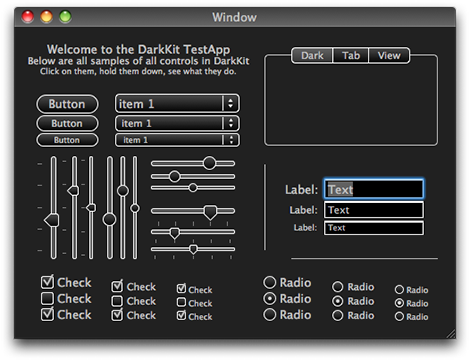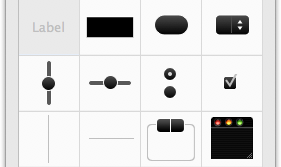If you didn’t know already, I’m a lover of eclectic information. Here is a sampling of some of the more interesting facts I’ve gleaned from the Wikipedia. In no particular order:
* Birds, reptiles and amphibians only have one orifice for their intestinal and urinary tract. This orifice is called the [Cloaca](http://en.wikipedia.org/wiki/Cloaca), from the Latin for sewer. If that’s not cool enough get this: some turtles have gills in their cloacal cavity.
* [Belt Drives](http://en.wikipedia.org/wiki/Belt_%28mechanical%29) are cool! Because of the repetitive nature of their use, wear is a major concern. Thankfully there are clever ways to reduce the wear. 1) flat belts can be made into a [Möbius strip](http://en.wikipedia.org/wiki/Möbius_strip). 2) timing belts can made so that the number of teeth on the belt and all of the sprokets are [coprime](http://en.wikipedia.org/wiki/Coprime).
* [Gastropoda](http://en.wikipedia.org/wiki/Gastropoda) have diversified so much over geological time that evolutionarily things have gotten very confused. There are land species with gills as well as marine species with lungs. Slugs (Gastropoda without much of a shell) are also interesting because most go through [torsion](http://en.wikipedia.org/wiki/Torsion_%28gastropod%29) where the internals and the shell of the gastropod rotate. This can be problematic since it puts the anus right by the mouth – but evolutionarily speaking it must of been helpful for something.
* The parasitic flatworm [Leucochloridium paradoxum](http://en.wikipedia.org/wiki/Leucochloridium_paradoxum) is an amazing example of [aggressive mimicry](http://en.wikipedia.org/wiki/Aggressive_mimicry). The flatworm’s sporocyst grows within a snail, invading the tentacles of the snail, with a preference to the left. The now swollen and colored tentacle mimics the appearance of a caterpillar – which a bird host eats. A snail then consumes the birds feces completing the cycle. Some interesting bits about the infected tentacle’s effect on the snail: 1) it cannot retract into its shell, leaving the flatworm always exposed. 2) it appears to reduce light sensitivity in the snail which keeps it out in the open in view of potential hosts.
* The [Tempest Prognosticator](http://en.wikipedia.org/wiki/Tempest_Prognosticator) was a curious invention from the 1850’s. It was a barometer made of [leeches](http://en.wikipedia.org/wiki/Leech). The inventor, George Merryweather, found that leeches would respond to changes in the atmosphere by climbing to higher ground. It consisted of a number of leaches each in their own glass jar, at the top of which was a piece of whale bone tied to a string. \[[diagram](http://www.scholars.nus.edu.sg/landow/victorian/technology/packer/merryweather.html)\] When the leach would climb the jar it would dislodge the whale bone which would pull a mallet which would strike a bell – you would guess the likelihood of a storm by the number of bell rings. He had lobbied for it to be distributed throughout the coast of England, but the British Crown decided instead on the (still not entirely understood) [storm glass](http://en.wikipedia.org/wiki/Storm_glass).
* [Neurocysticercosis](http://en.wikipedia.org/wiki/Neurocysticercosis) is a condition caused by the infestation of the brain by the tapeworm [Taenia solium](http://en.wikipedia.org/wiki/Taenia_solium). If you aren’t afraid of undercooked meat yet, I think you might now – the usual vector for infection is through larvae in pork meat (though autoinfection through vomit or feces is also possible). Treatment of Neurocysticercosis can be very problematic. The problem is that living cysticerci are typically asymptomatic, the complications arise when the organism dies, triggering the host’s immune response and leading to the inflammation, scarring, etc. that can lead to seizures, paralysis, and death.
* While all flies will occasionally mistake fetid wounds for dead flesh, [Cochliomyia hominivorax](http://en.wikipedia.org/wiki/Cochliomyia_hominivorax), a spechies of [screwworm fly](http://en.wikipedia.org/wiki/Screw_worm), is notable for targeting fresh wounds and even exposed skin (e.g. the navel) for laying their larvae, causing [Myiasis](http://en.wikipedia.org/wiki/Myiasis). The larvae are also very aggressive, if disturbed they will burrow further into the host, hence their name. They are known to infect humans and are also a major concern for [merino](http://en.wikipedia.org/wiki/Merino) sheep, where the condition is called flystrike. However, before you get too worried, know this – that the fly caused so much destruction to American cattle herds that the [sterile insect technique](http://en.wikipedia.org/wiki/Sterile_insect_technique) was developed as a means of controlling the screw worm. This led to its eradication in the United States in 1982.


